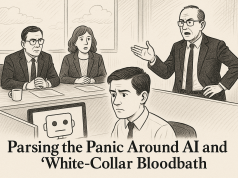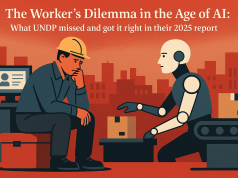In today’s fast-paced world, the quest for work-life balance has become more critical than ever. As the lines between professional and personal lives blur, the traditional 9-to-5 work schedule is under scrutiny. A subject that resonates deeply with the New York Times readership – comprised of professionals, thought leaders, and cultural influencers – the relevance of conventional work hours is a conversation worth exploring.
The question at hand is whether this model, a relic of the industrial age, is still serving the needs of a modern, dynamic workforce. The changing demographics, reflective of a broader range of lifestyles including dual-income families, single parents, and the gig economy workers, signal a shift in how we define the structure of our workday.
As a Workplace Wellness Expert, I’ve observed that flexible working arrangements have been steadily on the rise, with many heralding them as the future of employment. These arrangements, whether in the form of remote work, compressed work weeks, or flextime, tout benefits that often include improved employee well-being, reduced stress, and heightened job satisfaction. In essence, flexible work schedules are more than just a convenience; they are a critical component of modern employee engagement strategies.
However, these benefits are not without their trade-offs. Critics argue that the erosion of the 9-to-5 model can lead to longer hours, the encroachment of work into personal time, and challenges in team coordination. There’s a delicate balance to be struck between flexibility and the potential for ‘always-on’ work culture, which can adversely affect mental health and overall well-being.
Companies are thus tasked with the complex mission of redefining work models to suit this new era. This involves not only implementing flexible schedules but also setting clear boundaries to ensure that productivity does not come at the expense of employees’ personal time.
For example, technology companies in Silicon Valley have long abandoned strict 9-to-5 schedules, instead opting for results-oriented work environments. This focus on outcomes rather than hours spent at the desk has led to innovative solutions like job sharing and unlimited vacation policies, which prioritize the quality of output over the quantity of time logged.
Moreover, the pandemic has accelerated the adoption of remote work, which has proven to many companies that a non-standard work schedule can still maintain, if not enhance, productivity. In New York City, where the hustle of the metropolis is synonymous with the hustle of the workforce, the pivot to remote work has been a revolutionary change.
To ensure the success of flexible work arrangements, companies must invest in communication tools, holistic wellness programs, and a strong organizational culture that supports these new models. Additionally, it is essential that leaders model healthy work-life boundaries and encourage their teams to do the same.
In conclusion, while the 9-to-5 workday may no longer be universally applicable, it’s not necessarily obsolete. It remains relevant to certain sectors and individuals who thrive on routine and clear demarcation between work and home life. However, for a large segment of New York Times’ readership and beyond, the future of work-life balance lies in a more adaptable approach to when, where, and how we work. As we evolve towards this future, companies and employees must work in tandem to redefine productivity, ensuring it is measured by impact rather than hours, and that it integrates seamlessly with our quest for a balanced life.





















![From TAOLabs: A New, Simplified Way to Learn in the Age of Chaos [30m60h90d] From TAOLabs: A New, Simplified Way to Learn in the Age of Chaos](https://theworktimes.com/wp-content/uploads/2025/05/ChatGPT-Image-May-13-2025-01_11_22-AM-300x194.png)






